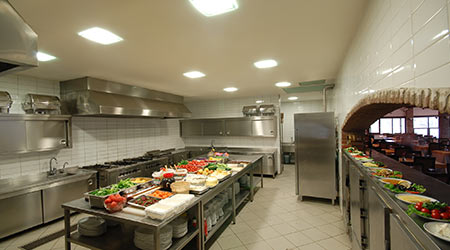
According to public health officials, there are three primary ways that food in restaurants and food processing facilities can become contaminated and unsafe to consume. These are:
1. Biological: unhealthy microorganisms in the food
2. Physical: hair, dirt, airborne pollutants that get in the food
3. Chemical: intrusion of cleaning chemicals into the food
“Knowing the three main types of hazards [that can contaminate food] helps us find ways to prevent food contamination,” says Matt Montag, distribution sales manager for CleanCore Technologies, manufacturers of aqueous ozone cleaning systems used in the food service industry. “Some of these ‘sanitization tips,’ as I call them, are based in common sense.”
For instance, Montag’s list of sanitation tips includes the following:
• Appropriate personal hygiene of all staff members handling food; this includes frequent washing of hands, arms, and making sure all sores or cuts are covered
• Storing food only as long as recommended and at proper temperatures to ensure freshness and safety
• Effective cleaning and sanitizing of all food contact surfaces, food equipment, and utensils
• Proper cleaning of all floors, walls, and surfaces
“However, proper cleaning typically involves using cleaning solvents and this can be a double-edge sword,” says Montag. “This is because we know if cleaning chemicals get into food, it can be dangerous.”
To avoid or limit this risk, Montag recommends the following:
• Use auto-dispensing systems to ensure cleaning chemicals are properly diluted.
• When cleaning surfaces, spray the cleaning solution onto the cloth, not directly onto surfaces; this can reduce the amount of chemical used and prevent cleaning chemicals from becoming airborne.
• Look into alternative cleaning and sanitizing methods such as the use of aqueous ozone, already used to clean fruits, vegetables, and other food items.
• Provide ongoing training and education of all food handling workers.
• Have all cleaning, sanitizing, and food safety instructions available in multiple languages.
“Also, along with having instructions in multiple languages, visual cues and signs should be posted throughout the kitchen,” says Montag. “These constant reminders can really pay off when it comes to food safety.”

 The Down and Dirty on Cleaning in Virus Season
The Down and Dirty on Cleaning in Virus Season How Surfactant Use is Expanding in Commercial Cleaning
How Surfactant Use is Expanding in Commercial Cleaning Clean Buildings Conference
Clean Buildings Conference